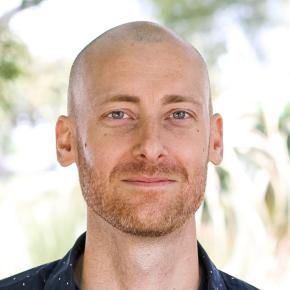Here we go again.
Just when I think abortion arguments couldn’t get any more anti-scientific, they do.
I recently wrote an article on how the science of embryology has firmly established that human life begins at conception. In the article, I don’t cite theologians or Bible verses. Instead, I cite scientists from leading human development textbooks.
The bottom line is, science affirms that “the embryo is a human being from the time of fertilization.”1 Therefore, science supports the pro-life position that abortion kills a human being.
Abortion advocates don’t like this scientific conclusion. Rather than concede that a new, distinct, whole human being comes into existence at fertilization, some abortion advocates have doubled down on their commitment to anti-scientific foolishness.
For example, comedian and Whose Line Is It Anyway? performer Heather Anne Campbell tweeted:
sperm has DNA. DNA is when life begins. every sperm is a potential human being. so, no more masturbating, gentleman, unless you want to be convicted of a felony. carrying a cellphone in your pocket damages your sperm, so no cellphones either. skirts only for men to protect sperm.
Campbell’s argument—if we can even call it that—seems to be that if killing embryos through abortion is murder (“a felony”), then so is masturbation, which kills millions of sperm.
This scientifically illiterate tweet received nearly 170,000 “likes.” That is, 170,000 people read this post and thought it was a good argument. The overwhelming approval of this tweet demonstrates the desperate need for better science education.
Unbelievably, Campbell’s tweet isn’t anything new. This misinformed nonsense made it into the HuffPost in a piece titled “My Proposal for a Bill that Bans Male Masturbation in Texas.” Attempting to argue against a Texas fetal pain bill in 2013, a self-described social equality advocate sarcastically stated, “The anti-choice bill in Texas currently being debated is a great start, but we need to go right to the source: the horrible murder of sperm that occurs during male masturbation.” He goes on to say, “For all we know, these are living organisms that endure excruciating nerve stimulation when exposed outside of the male reproductive system.”
Again, on this view, if abortion is murder, then so is masturbation. Notice, in both cases, there is an assumed biological equivalency between a human sperm cell and a human embryo.
As a science teacher, the lack of basic biological understanding is extremely disconcerting. As a result, I think it’s time to go back to school and correct some fundamental errors.
First, this argument confuses parts of an organism with a whole organism.
More specifically, these abortion advocates assume that a sperm cell is the same kind of thing as a human embryo. But they are not the same. A sperm cell is not an organism—an individual being. Rather, it is merely one part of an existing organism. A human embryo, on the other hand, is a whole, distinct organism.
This distinction should not be controversial. In fact, the distinction between parts and wholes is made all the time in biology. For example, notice how Essential Cell Biology—a standard cellular biology textbook—describes the nematode worm:
Another widely studied organism is the nematode worm Caenorhabditis elegans.... [T]his creature develops with clockwork precision from a fertilized egg cell into an adult that has exactly 959 body cells (plus a variable number of egg and sperm cells). [Emphasis mine.]2
Biologically speaking, there is an essential difference between the cells that make up the nematode—the parts of the organism—and the nematode itself—the whole organism.
Likewise, there is an essential difference between the cells that make up a human being—including the sperm and ovum cells—and the human being itself. A body cell or sex cell is merely part of a human organism, whereas a human embryo is a distinct human organism.
True, every somatic (body) cell in the human body contains a copy of the organism’s DNA (i.e., 46 chromosomes). In the case of the gamete (sex) cells, they contain half of the organism’s DNA (i.e., 23 chromosomes). But this fact does not mean that each cell in the human body is a living, whole, distinct organism. Simply put, DNA is a necessary condition for having a distinct organism, but it’s not a sufficient condition for having a distinct organism.
So, if sperm and embryo both have DNA, what’s the defining difference between them? In short, whole organisms function in a way that parts of an organism do not.
In his article titled “Embryonic Human Beings,” bioethicist Patrick Lee writes, “Somatic cells are not, and embryonic human beings are, distinct, self-integrating living beings actively disposed to direct their own maturation as members of the human species.”3
Maureen Condic, professor of neurobiology at the University of Utah, expands on this point. She says,
From the moment of sperm-egg fusion, a human zygote acts as a complete whole with all the parts of the zygote interacting in an orchestrated fashion to generate the structures and relationships required for the zygote to continue developing towards its mature state.... The zygote acts immediately and decisively to initiate a program of development that will, if uninterrupted by accident, disease, or external intervention, proceed seamlessly through formation of the definitive body, birth, childhood adolescence, maturity, and aging, ending with death. This coordinated behavior is the very hallmark of an organism.
Mere human cells, in contrast, are composed of human DNA and other human molecules, but they show no global organization beyond that intrinsic to cells in isolation. A human skin cell removed from a mature body and maintained in the laboratory will continue to live and will divide many times to produce a large mass of cells, but it will not re-establish the whole organism from which it was removed; it will not regenerate an entire human body in culture. Although embryogenesis begins with a single-cell zygote, the complex, integrated process of embryogenesis is the activity of an organism, not the activity of a cell. [Emphasis mine.]4
From the moment of fertilization, a human embryo acts in an organized and coordinated fashion to bring the organism through the various stages of development. This separates it from every other cell in the human body.
Second, this confuses a potential human being with an actual human being.
Certainly, a sperm cell has the potential to create a human being under the right circumstances. In fact, given the advancement of modern technology, any of your cells (e.g. skin cell) has the potential to be used to create a new human being. This is how cloning works. But make no mistake; a sperm is not a human being. Therefore, killing a sperm is not killing a human being.
Conversely, a human embryo is not a “potential” human being. It is a human being. This is a scientific fact. Therefore, killing a human embryo is killing a human being.
Furthermore, when we speak of the potential of a sperm cell and the potential of a human embryo, we mean two very different things. A sperm cell has the potential to create a distinct organism—a new human being—when fused with an ovum cell. However, a human embryo already is a distinct organism. As such, it has the potential to direct itself through the stages of human development.
Therefore, it is scientifically accurate to say that the embryonic stage “marked the beginning of each of us as a unique individual.”5 You and I once were an embryo. Before that point, we did not exist. Conversely, it is scientifically absurd to say you once were a sperm or you once were an ovum.
Princeton University legal scholar Robert George and Franciscan University of Steubenville professor of bioethics Patrick Lee state,
You and I were never either a sperm cell or an ovum. Nor would a person who was brought into being by cloning have been once a somatic cell. To destroy an ovum or a skin cell, the constituents of which might have been used to generate a new and distinct human organism, is not to destroy a new and distinct human organism—for no such organism exists or ever existed. However, to destroy a human embryo is precisely to destroy a new, distinct and complete human organism, an embryonic human being. [Emphasis mine.]6
This isn’t hard. A human embryo, even in its unicellular form, is a living, distinct, whole human organism. Therefore, it is different in kind to every other human cell.
Comparing the killing of human embryos to the killing of sperms cells is ignorant at best and dishonest at worst. Those who continue to spout this nonsense are in direct opposition to science. Fortunately, we can correct these category confusions with some basic biology.

